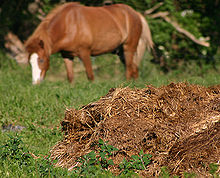Bacone College
| File:Bacone-logo.gif | |
| Established | 1880 |
|---|---|
| President | Rev. Dr. Robert J. Duncan, Jr. |
| Students | 900 |
| Address | 2299 Old Bacone Road , , , Muskogee, OK 74403 |
| Campus | Suburban |
| Colors | Red and White |
| Nickname | Warriors |
| Affiliations | RRAC, NAIA |
| Website | www.bacone.edu |























Bacone College is a private four-year liberal arts college in Muskogee, Oklahoma. Founded in 1880 as the Indian University by Almon C. Bacone, Bacone College is the oldest continuously operated institution of higher education in Oklahoma. The college has strong historic ties to various tribal nations, including the Cherokee Nation and the Muscogee Creek Nation, and the American Baptist Churches of America.
Bacone College is a member of the Higher Learning Commission of the North Central Association of Colleges and Schools, the Oklahoma Independent College Foundation and Universities, the Joint Review Commission for Radiography Education, the National League for Nursing, the National Association of Intercollegiate Athletics, and an affiliate member of the Oklahoma Association of Colleges for Teacher Education. Its current president is Rev. Dr. Robert J. Duncan, Jr., a United Methodist minister from Drew University.
Bacone College sports compete as the Warriors in the Red River Athletic Conference of the National Association of Intercollegiate Athletics (NAIA).
History
The college traces its origins to a request to the American Baptist Home Mission Society by Professor Almon C. Bacone, a missionary teacher, to start a school in the Cherokee Baptist Mission at Tahlequah, Indian Territory. The only faculty member, Professor Bacone, enrolled three students and by the end of the first semester, the student body had quadrupled; by the end of the first year, student population was fifty-six and the faculty numbered three.
Seeing the need to expand, an appeal was made to the Muscogee (Creek) Nation's Tribal Council for 160 acres of land in nearby Muskogee, Oklahoma, known then as the "Indian Capital of the World." The land was granted, and in 1885 Indian University was moved to its present site. In 1910, it was renamed Bacone Indian University after its founder and first president and was later changed to Bacone College by its Board of Trustees.
Patrick J. Hurley attended Bacone College.
Campus
One of the first buildings to be erected was Rockefeller Hall, a three-story building made possible by a $10,000 contribution from John D. Rockefeller. "Old Rock," as it came to be called, served as classroom, dormitory, dining hall, chapel, teacher quarters and administration building. It was razed in 1938 and a Memorial Chapel was built in its place, which was destroyed by fire and rebuilt in the 1990s.
The campus contains many other reminders of Bacone's history, tradition, and goals. One of these is a small cemetery, the final resting place of Bacone Presidents Almon C. Bacone (1880-1896) and Benjamin D. Weeks (1918-1941), as well as others associated with the school. A "stone bible" sculpture marks the spot on which President Bacone and two Baptist missionaries who were also trustees of Indian University, Joseph Samuel Murrow and Daniel Rogers, knelt in prayer to dedicate the college. The names of all its presidents, are inscribed on its surface.
Other structures on campus include the The Indian Room at the Bacone College Library, which is the home of many of Almon C. Bacone original papers, the Ataloa Lodge Museum, which has one of the largest privately owned Native American collections, and the McCombs Gallery, which features a large cross-section of Native American art as well as work from faculty emeritus Richard "Dick" West (Cheyenne), a Master Artist best known for his traditional Plains style artwork, and Woody Crumbo, the only American Indian ever to receive the Julius Rosenwald Fellowship.
